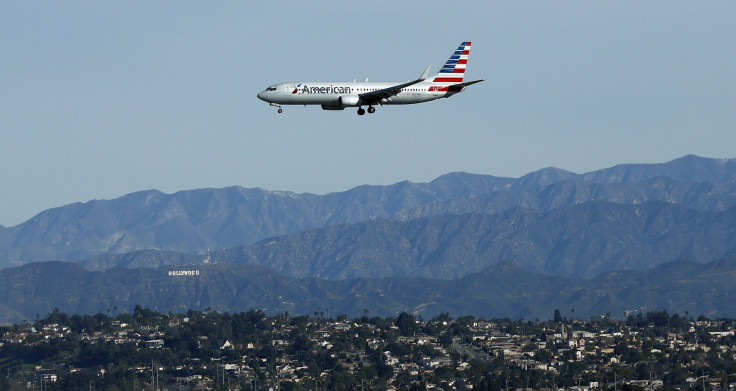Shares Of US Airlines Down As They Face A Glut Of Empty Seats

Share prices of U.S. airlines, including American Airlines, the world's biggest carrier, were off to their worst start of the year since 2011 on Tuesday. The slump is a result of analyst concerns that airlines are offering too many seats, reported Bloomberg News.
The shares of 10 out of 11 U.S. air carriers, including No. 2 and 3 Delta and United, fell on Tuesday, and had the slowest period to open the year since an 8.7 percent drop in 2011. The industry has had rallies of as high as 35 percent in the first quarter of the previous three years.
Analysts Julie Yates of Credit Suisse Group AG and Darryl Genovesi of UBS AG expect the downturn to continue, noting that revenue from each seat flown one mile fell in the first quarter of 2015 and will probably continue to fall.
"It's really easy for investors to extrapolate a little bit of negative through the whole year. Investors are hoping for a little capacity discipline and maybe some cutback in flight schedules. Things like that help shore up the revenue environment," Andrew Meister, an analyst with Thrivent Financials for Lutherans, told Bloomberg.
Airlines are already refraining from adding flights to increase passenger capacity. In fact, the number of commercial flights in the U.S. has fallen by 15 percent since 2005. Instead, airlines are packing more seats into existing planes. Some are also trading smaller aircraft for larger ones, which burn less fuel per seat but also offer more seats, decreasing the occupancy factor.
As the trend continues, investors fear a surplus of airline seats requiring airlines to cut prices in order to fill planes. “It’s a harbinger of things to come,” said Meister.
According to Bloomberg, five of the six largest U.S. airlines increased seat capacity in the beginning of 2015; American Airlines was the only one that did not.
By Tuesday afternoon, shares of American Airlines [NASDAQ:AAL], the world’s largest by passengers carried, were down 1.64 percent. According to TheStreet’s Quant Ratings report, the stock was still rated as a “hold.”
“The primary factors that have impacted our rating are mixed -- some indicating strength, some showing weaknesses, with little evidence to justify the expectation of either a positive or negative performance for this stock relative to most other stocks,” said The Street analysts. “The company's strengths can be seen in multiple areas, such as its notable return on equity, robust revenue growth and solid stock price performance. However, as a counter to these strengths, we also find weaknesses including generally higher debt management risk and poor profit margins."
But the dropping price of jet fuel has helped airlines offset any revenue losses from weakened demand. Analysts still expect first-quarter earnings to be higher than they were a year ago at the country’s six largest airlines.
“The price of oil has gone down considerably, and will more than offset any pullback in terms of price to the consumer or even the fact that airlines may expand,” Robert S. Bacarella, chairman and co-founder of Monetta Financial Services, told Bloomberg.
After a blisteringly tough decade full of mergers, losses and financial turmoil during which they lost $58 billion, U.S. airlines started reversing their fortunes in 2009 and have been posting record profits in recent years. It remains to be seen how they will manage a downturn in demand.
“It’s real easy when demand is strong to say you’re going to grow capacity less than demand grows,” Meister said. “If demand is flat, will they cut capacity? That will be the acid test to see if the industry has changed its stripes.”
© Copyright IBTimes 2024. All rights reserved.





















